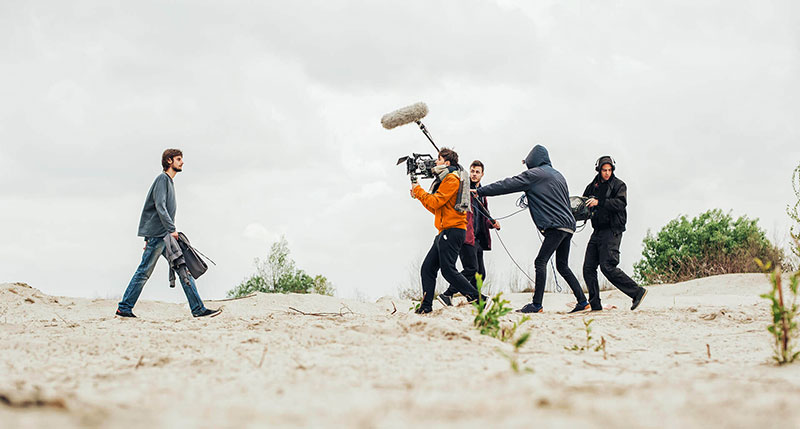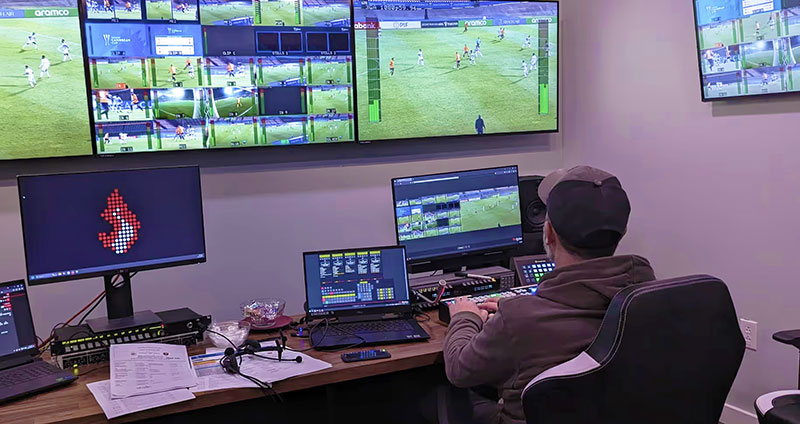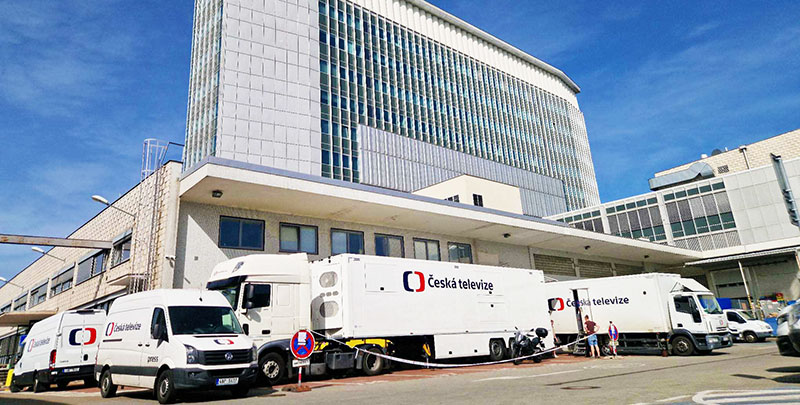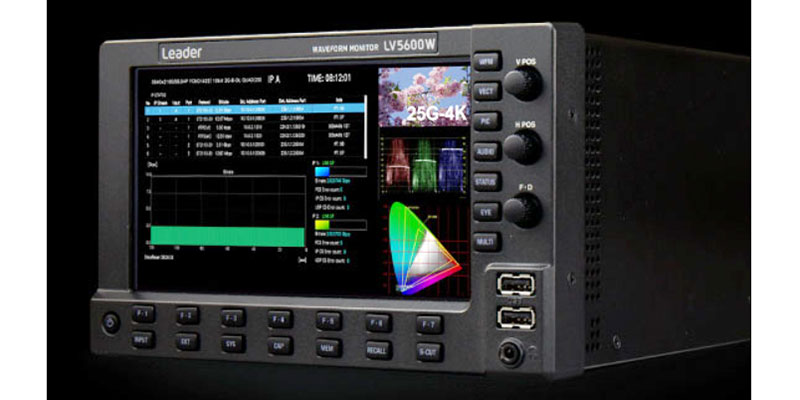Olivier Suard at Nevion highlights broadcasters, production companies and media groups who now consider sustainability as a strategic objective within businesses, rather than simply nice to have.

Olivier Suard, VP of Marketing at Nevion, calls attention to the fact that organisations from broadcasters and production companies to media groups are now more likely to consider sustainability as a strategic objective within their businesses, rather than simply nice to have.
Driven by growing customer, investor and regulatory expectations, but also by a realisation of the potential commercial benefits, IP media transport is fast emerging as the foundation for more sustainable workflows. By decoupling the physical location from the media processing and control process, IP transport can lead to greater flexibility, scalability and efficiency.
This capability is especially significant for live production, one of the most resource-intensive areas in the industry. However, the shift to IP is just one of many sustainable innovations for the sector, where organisations find they can play a significant part in not only tackling climate change but reducing costs at the same time.
Sharing Production Resources
Live broadcast production, with its heavy logistics, power usage and equipment turnover is a major source of direct and indirect emissions and waste. For example, traditional on-site productions often require dozens of crew members and tons of equipment travelling via truck, van or air, creating a substantial carbon footprint.
Continuous, high-availability processing and networking across cameras, switchers, routers and other equipment also comes with high energy use, while underused or unused infrastructure is often consuming unnecessary space and power.
“Alongside this, the rapid evolution of video formats, such as HD and 4K, calls for frequent hardware refresh cycles, which is leading to e-waste from the disposal of old equipment,” said Olivier.
“Meanwhile, regulations concerned with corporate carbon reporting, such as the EU CSRD, UK SECR and US SEC climate disclosure proposals, have been tightened, forcing sustainability to the top of the corporate agenda.
“IP is acting to reduce the environmental strain placed by physical production by enabling organisations to consolidate and share production resources, which may be places, processing or people across geographically dispersed operations around the world. It means that vital equipment such as video mixers, graphics engines and multi-viewers can reside in centralised facilities – or in the cloud – ready for access by operators from anywhere. In some cases, production crews can even complete tasks from home.”
A Distributed Approach
In a distributed setup, the ability to use expensive media processing equipment where it lives, essentially reduces the need to manufacture new systems and transport them to different locations. Olivier noted, “Remote production workflows can reduce travel-related emissions by 80-90% or even more.

“Commercially, higher utilization of such equipment from any location leads to faster ROI and reduces unnecessary spending. While some expenditure associated with maintaining large OB trucks on-site, shipping equipment or paying for crew travel may still be required, these costs are notably reduced, resulting in significant cost savings.
“IP also offers some additional sustainable benefits. IP networks typically support higher signal density and routing flexibility compared to traditional SDI environments, with physical links able to transport multiple signals, resulting in less cabling and bandwidth wastage than with traditional setups. IP infrastructure is also inherently format-agnostic. Whether it’s HD, 4K, 8K, HDR or some other format, wholesale replacements are needed less often to evolve or scale effectively.”
Maximising Hardware
The shift towards IP is inherently more sustainable for broadcasters. For example, video compression facilitates efficient remote and distributed production because, without codecs such as JPEG XS and HEVC, available bandwidth would often be insufficient or too costly to support environmentally positive workflows.
Regarding the concern about high energy use among equipment that remains always-on, Olivier notes that power control is now a feature of some devices. He said, “The ability to shift into partial shutdown or hibernation mode when not in use can achieve power savings of up to 80%. Again, a bottom line benefit exists here as well. Significantly reduced power usage – not just in the equipment itself, but also through reduced air-conditioning requirements when heat is generated – means lower energy bills for organisations.”
Furthermore, new equipment is more often designed with modularity in mind. Faulty components such as power supplies or fans can be replaced without making wholesale changes to the equipment, in turn reducing waste. The increasing use of software-definable equipment means devices are more versatile and can be used more and for longer.
The Role of Orchestration
Modern network orchestration and broadcast control systems within IP setups are core to enabling sustainable production workflows, particularly in the context of resource sharing and remote production. Sophisticated orchestration systems help to improve utilization rates of equipment by allowing resource sharing and also by launching/retiring and starting/stopping software processes automatically in the cloud, for example.
“Orchestration systems, which are already so crucial to the management of media workflows, are well-positioned to become the control plane for sustainability. They can work in conjunction with device telemetry and carbon accounting models to gain insight on the impact of actions and report in real-time on emissions to meet compliance requirements,” said Olivier.
“This reporting capability is vital to understanding Scope 3 emissions, such as equipment manufacturing and shipping, cloud usage and even vendor operations. Bringing Scope 3 emissions down will require collaborative action by multiple businesses in the value chain. After all, sustainability will not be achieved by one business alone. Organizations will need to carefully consider business partners and choose those that have targets and processes in place to achieve their own sustainability goals.”
Good for the Planet – and the Bottom Line
IP-based production is the foundation for a sustainable industry, and provides a number of opportunities for more efficient and more flexible workflows. By sharing resources across locations, organisations benefit from operating with less equipment. Modular solutions are enabling changes to software without incurring unnecessary e-waste, with smart powering- down functionalities to ensure optimum energy use.
Importantly, the sustainability benefits that IP technology brings also directly translate into commercial benefits. Olivier said, “Shipping less equipment and sending fewer people on-site, increasing equipment and bandwidth usage, and reducing power consumption all mean cost savings – and that’s before the additional productivity benefits are factored in. In short, sustainability is good for the bottom line.
“Last of all, orchestration is fundamental to creating a sustainable environment by monitoring workflows and reporting on emissions in real-time to drive sustainable strategies. By working closely with like-minded partners to incorporate these practices and solutions, organizations can make tangible progress in reducing their environmental impact, shaping a more responsible media ecosystem.” nevion.com




















